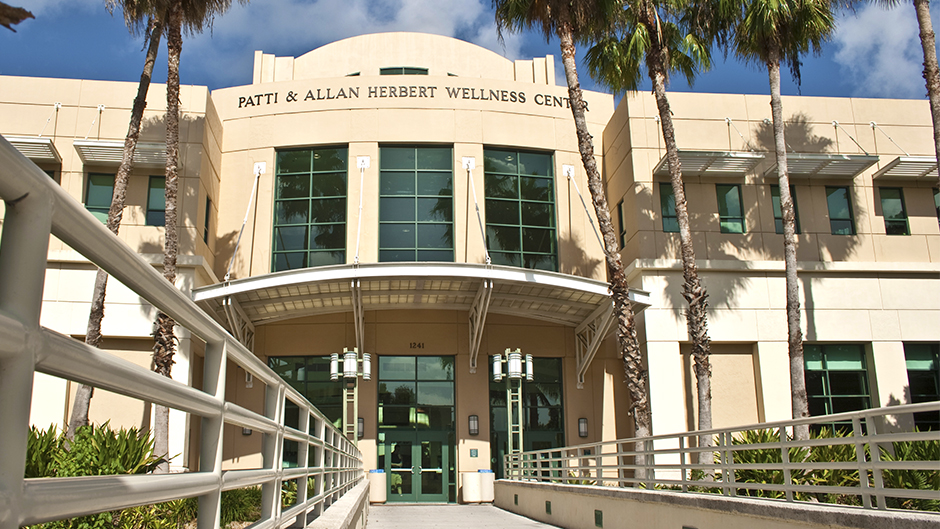As a leader in energy conservation and sustainable living, the University of Miami is committed to creating an environmentally friendly campus. With several LEED-Certified buildings, including the exciting new addition of the Lakeside Village student complex, the University prioritizes its environmental impact while expanding. But what about buildings such as the Herbert Wellness Center that were constructed prior to LEED certifications?
Overhauling and retrofitting buildings can be cost-prohibitive or sometimes simply not feasible. However, the solution may lie in an unexpected place—solar film. Through a collaborative effort between the Office of Sustainability, the Herbert Wellness Center, the Division of Facilities Operation and Planning, and the sponsorship of the Student Government ECO Agency, the University was able to implement an energy-saving and cost-effective measure to increase the longevity of buildings and responsibly retrofit the University of Miami’s Coral Gables Campus.
According to Matthew Christie, a University of Miami junior and technology chair for the University’s ECO Agency, “Many places, particularly in South Florida, use more electricity to power air-conditioning than for any other use. Because of this, the GreenU technology committee began looking into ways to reduce the energy consumption associated with air- conditioning. And the most approachable method we found was to apply a solar tint that rejects ultraviolet radiation.”
The group used a solar film, which is a tint that is applied to windows to reflect the sun’s energy and block ultraviolet light and infrareds. In South Florida, where temperatures regularly reach above 80 degrees Fahrenheit, mitigating the amount of energy that enters a building is paramount. Heat from the sun can make it more difficult and costly to cool interior spaces, and this is especially true in large buildings like the Wellness Center.

It has been proven that solar film blocks up to 99 percent of the sun’s ultraviolet rays and up to 80 percent of its heat. The energy savings is expected to increase greatly over the coming years, resulting in less energy consumption, less electricity being used, and more efficient cooling. “So far, everyone is pleased with the project and once our energy experts begin evaluating the reduction in solar heat and UV rays, we will see some actual savings data on our energy costs,” said Scott Levin, executive director of the Herbert Wellness Center.
Understanding illuminance.
Aside from seeing and feeling how much light is in a building, how else can one tell if solar films are working? By measuring illuminance or the amount of light reflected off a surface, one can gauge how much energy is in a room.

Measuring at the same time before and after the film was applied when the sun’s heat was the most intense, the amount of energy seeping into the windows was dramatically decreased. The typical range of illuminance in an office setting is between 320-500 lux (or lx, which is the measurement of illuminance). The illuminance in the area of the Wellness Center with the new window tint clocks in at 507 lux, as compared to areas without it which measure 2230 lux (the zero can be seen below the “3”)— a difference of nearly 440 percent.
While the benefits of installing solar film were straightforward, it required several departments and organizations banding together to get it done. To start, Christie—a civil, architectural, and environmental engineering major—worked closely with a team of four ECO Agency members who focus on energy and water conservation. “The technology subcommittee collaborated with the Herbert Wellness Center to make this project a reality. It helped foster interdepartmental community and is testament to ECO Agency’s commitment to our peers,” he said.
Upon receiving the funding approval from the ECO Agency board, Christie reached out to stakeholders on campus, including the Office of Sustainability, the Herbert Wellness Center, and the Division of Facilities Operation and Planning. “I believe our student workers were excited and happy that the ECO Agency board spearheaded this project for the betterment of the Wellness Center,” said Connie Nickels, associate director of the Wellness Center.
Visit miami.edu/sustainability for more information about sustainability initiatives at the University of Miami or to learn more about Student Government’s ECO Agency,

